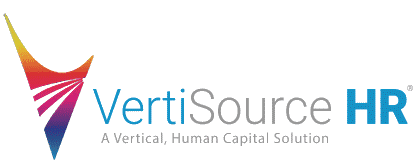Artificial intelligence (AI) is revolutionizing workplace safety—offering real-time hazard detection, predictive analytics, and automated compliance. AI-powered systems can reduce workplace injuries, improve compliance, and enhance efficiency.
However, AI also introduces legal, ethical, and operational risks that businesses must address. Here’s what every company needs to consider before integrating AI into their workplace safety strategy.
How AI is Transforming Workplace Safety
1. Real-Time Hazard Detection
AI-driven cameras, sensors, and wearables provide 24/7 monitoring, instantly identifying risks such as:
- Employees not wearing required PPE (helmets, gloves, safety goggles)
- Obstructions and trip hazards in walkways
- Malfunctioning or overheating equipment
Why it matters: AI helps prevent accidents before they happen, reducing injuries, downtime, and liability.
2. Predicting Accidents Before They Happen
AI analyzes historical data to forecast workplace hazards before they occur.
- Identifies high-risk areas and behaviors
- Flags equipment failures before they lead to breakdowns
- Detects worker fatigue, a major cause of accidents
Why it matters: AI shifts workplace safety from reactive to proactive, minimizing injuries and disruptions.
3. Automating Compliance & Reporting
AI simplifies regulatory compliance by:
- Auto-generating OSHA-compliant reports
- Detecting potential violations before they result in fines
- Reducing human error in safety documentation
Why it matters: Businesses can improve compliance, reduce penalties, and free up HR and safety teams for proactive initiatives.
The Risks of AI in Workplace Safety
1. Liability Concerns: Who’s Responsible When AI Fails?
AI is powerful but not perfect. If it fails to detect a hazard or wrongly flags an issue, who is accountable?
- The employer?
- The AI software provider?
- The employee following AI’s recommendations?
- Clearly define liability in AI vendor agreements
- Include indemnification clauses to protect your business
- Maintain human oversight in AI-based safety decisions
Key takeaway: AI should enhance—not replace—human accountability, and legal protections must be in place.
2. Employee Privacy & Data Concerns
AI-driven safety systems collect vast amounts of employee data, raising concerns about:
- Surveillance & tracking (movement, biometrics)
- Data security & storage (who controls the information?)
- Legal compliance (HIPAA, GDPR, and state privacy laws)
- Establish clear policies on AI data collection and use
- Limit AI’s access to personal employee information
- Ensure compliance with privacy and security regulations
Key takeaway: AI should enhance safety without compromising employee privacy or violating data protection laws.
3. AI Bias: Could It Unintentionally Discriminate?
AI learns from historical data—but if that data is biased, AI decisions may be too.
Example: If past safety violations disproportionately involved older workers, AI could unfairly classify them as higher-risk, leading to potential discrimination claims.
- Audit AI-driven safety decisions regularly
- Train AI using diverse, unbiased data
- Ensure final safety decisions involve human oversight
Key takeaway: AI must be fair and transparent, supporting a safe workplace without unintended discrimination.
AI in Workplace Safety: A Tool, Not a Replacement
At VertiSource HR, we believe AI should support—not replace—HR, safety, and compliance teams.
- AI improves workplace safety, but human oversight remains essential
- Businesses must stay ahead of AI-related legal, compliance, and privacy challenges
- AI should be a tool to enhance decision-making—not an autonomous solution
Final Takeaways: What Every Business Should Do Now
- Understand AI’s benefits—real-time hazard detection, predictive analytics, and automated compliance
- Recognize AI’s risks—liability concerns, employee privacy, and potential bias
- Ensure AI supports human oversight—AI should assist, not replace, safety professionals
- Stay ahead of AI regulations—compliance and liability laws are evolving rapidly
AI in workplace safety is here to stay—but the businesses that use it wisely will be the ones that truly benefit.
Want to stay ahead of workforce safety trends? VertiSource HR keeps businesses informed, compliant, and prepared. For more workforce insights and compliance guidance, visit VertiSource HR.


